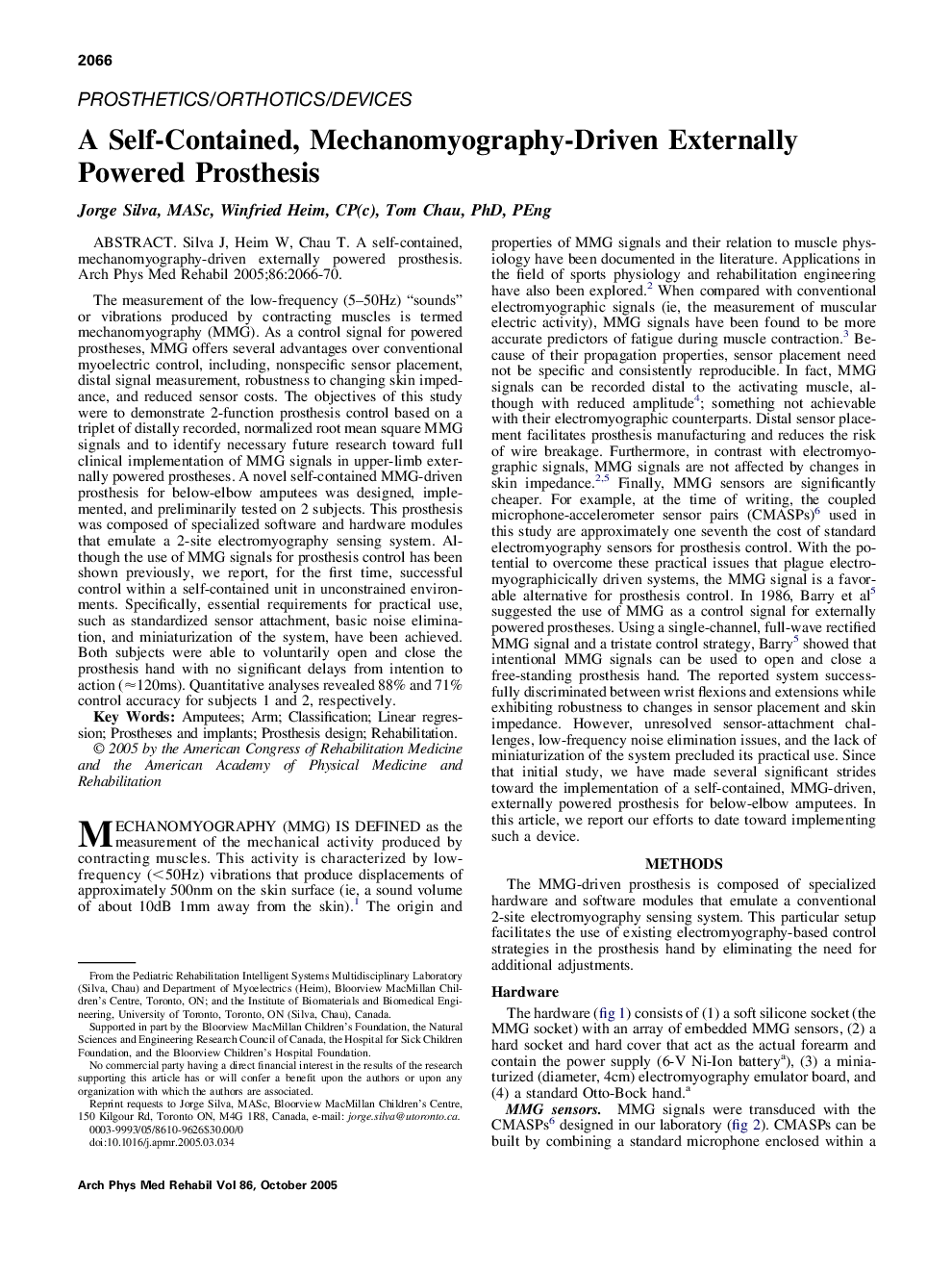| Article ID | Journal | Published Year | Pages | File Type |
|---|---|---|---|---|
| 3453359 | Archives of Physical Medicine and Rehabilitation | 2005 | 5 Pages |
Silva J, Heim W, Chau T. A self-contained, mechanomyography-driven externally powered prosthesis.The measurement of the low-frequency (5–50Hz) “sounds” or vibrations produced by contracting muscles is termed mechanomyography (MMG). As a control signal for powered prostheses, MMG offers several advantages over conventional myoelectric control, including, nonspecific sensor placement, distal signal measurement, robustness to changing skin impedance, and reduced sensor costs. The objectives of this study were to demonstrate 2-function prosthesis control based on a triplet of distally recorded, normalized root mean square MMG signals and to identify necessary future research toward full clinical implementation of MMG signals in upper-limb externally powered prostheses. A novel self-contained MMG-driven prosthesis for below-elbow amputees was designed, implemented, and preliminarily tested on 2 subjects. This prosthesis was composed of specialized software and hardware modules that emulate a 2-site electromyography sensing system. Although the use of MMG signals for prosthesis control has been shown previously, we report, for the first time, successful control within a self-contained unit in unconstrained environments. Specifically, essential requirements for practical use, such as standardized sensor attachment, basic noise elimination, and miniaturization of the system, have been achieved. Both subjects were able to voluntarily open and close the prosthesis hand with no significant delays from intention to action (120ms). Quantitative analyses revealed 88% and 71% control accuracy for subjects 1 and 2, respectively.
